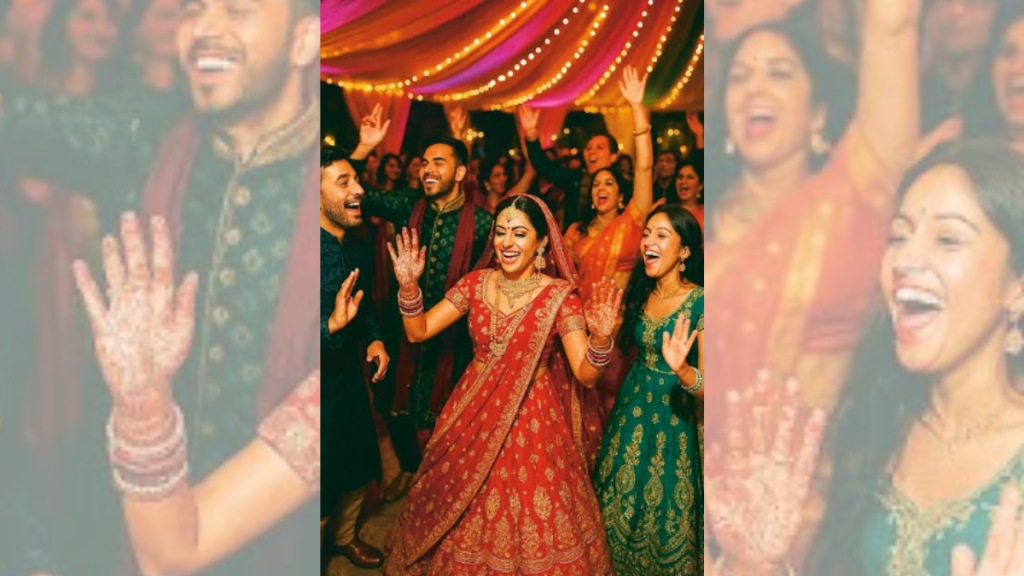Delhi-based Manisha Singh wanted a break from her usual routine of brunches, clubbing, and house parties. So this month, the 28-year-old did something unexpected: she attended a “fake sangeet”.
No, this isn’t a sham. It’s a rising trend, meant for those who miss the chaos and charm of a big fat Indian wedding — the dressing up in traditional clothing, the dancing to Bollywood hits, the Instagram-perfect marigold backdrops — minus the relatives, rituals and real vows.
Fake wedding phenomenon
“Gen Z and Millennials are craving shared, cinematic moments without any real-life baggage. A fake wedding lets them live out the fantasy. They get to dress up, dance, enjoy a mehendi, baraat, cocktails, all just for fun. It’s nostalgic, playful, and incredibly shareable on social media,” says Nishant Kumar, founder of Noida-based restaurant Tahia. The venue has hosted a fake wedding of its own this month, and has another lined up pretty soon. It saw participation from over 250 guests, says Kumar, with tickets priced at `1,500.
A typical ticket to an event like this is usually priced somewhere between `999 and 3,000 and is sold on platforms such as BookMyShow and Zomato’s District. It usually covers the cost of entry, a free drink or a snack, a curated photobooth, a wedding DJ and even designated mehendi corners. Rahul Ganjoo, CEO, District by Zomato, says he is seeing rising interest in events such as these on the event booking app. “We see growing enthusiasm from promoters and event curators, who’ve been producing and capitalising on the trend,” he says.
Experts say fake weddings are just another addition to India’s booming experience economy, a space shaped by immersive, social media-friendly moments. According to EY, India’s live events industry was valued at `12,000 crore in 2024 itself, and is projected to grow at a CAGR of 19% over the next three years. With viral reels and growing participation, several brands are coming on board to gain visibility. Twamev, Kuber Mouth Freshener and Satmola are among the brands that
have decided to engage with the young demographic through such “fake” weddings.
Where can brands fit in?
“For brands, events like this offer a unique opportunity to engage with people in a fun and memorable way. It’s not about direct product promotion, it’s about being part of an experience,” says Jatish Ghai, general manager, Radisson Blu Hotel & Spa, Nashik, which organised one of its own. He adds that the event typically operates at a margin of around 35–40%. “Given the growing interest and strong turnout, the model is quite profitable, especially when supported by brand partnerships and ticketed entries,” Ghai says.
Still, experts advise against chasing the trend blindly.
“Don’t jump on every fad unless you have a genuine connect with the Indian wedding extravaganza,” says investor and brand strategist Lloyd Mathias. “I think for brands that have a role in wedding celebrations – alcohol, jewellery etc, there is a connect. Else, there really isn’t any visibility. I think for now, it is safe to avoid this.”
